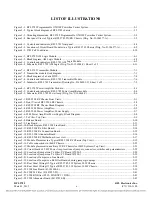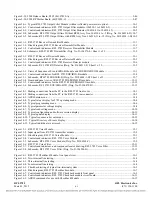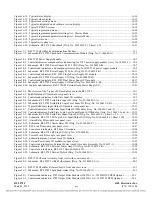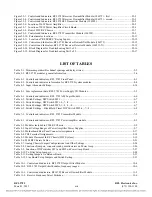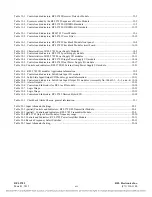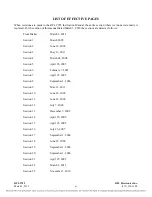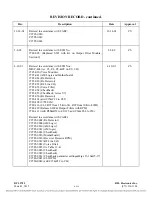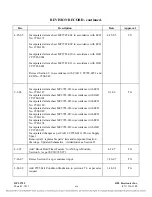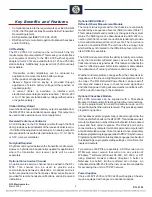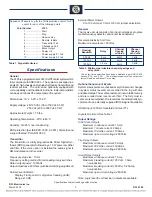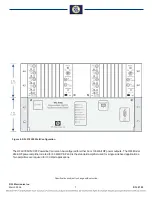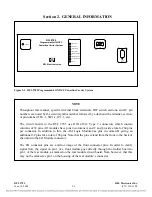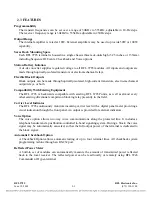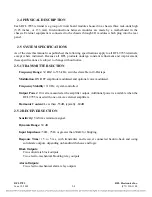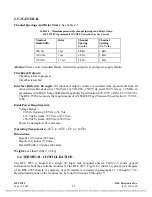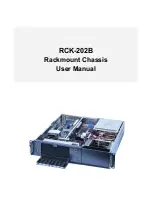
RFL Electronics Inc.
March 2005
RFL 9785
FEATURES
•
Compliance tested to the requirements specified in ANSI
C93.5-1997 Single Functions Powerline Carrier Transmitter/
Receiver Equipment.
•
ESD protection (per IEEE PC 37.90.3, 2001)
•
RS232 port for remote interrogation of optional checkback
and/or SOE log.
I/O Flexibility
The RFL 9785’s I/O module can be set to match the I/O
requirements of your equipment. This means you can interface
your equipment directly to the RFL 9785 without special
adapter circuits. I/O’s are available for 48, 125 and 250 Vdc
station battery. Additionally, logic level I/O’s (5 Vdc nominal)
are available.
•
Transmitter control (start/stop) can be achieved by
application or removal of station battery voltage
(either positive or negative polarity).
•
Reserve Signal Carrier keying is provided through
application of station battery voltage (either positive or
negative polarity).
•
A current limiter is available to interface with
electromechanical relays and provide 20 mA, 180 mA, 200
mA, or 1 Ampere at station battery voltage (either positive
or negative polarity).
Station Battery Output
A switched and fused station battery output is available from
the RFL 9785’s non-redundant power supply. This output can
be used to drive external low-current equipment.
Received Carrier Level Indicator
An LCD display on the CLI Module (visible through the front
door) provides a visual indicator of the received carrier level (+/
-10 dB from the adjusted nominal value). An analog output is
also provided for use with external indicators (+/-1V, 0-100
µ
A,
or 0-5V, jumper selectable).
No Hybrid Required
A hybrid is not required between the transmitter and receiver.
However, hybrids can be optionally supplied for applications
where the transmitter and receiver ports will be used
separately.
Optional Voice Service Channel
An optional voice service channel can be added to the RFL
9785. This channel can be used to provide voice
communications between substations. A handset and call
button are provided on the front panel. Rear connections are
provided for remote handsets, call buttons, and call received
indications.
Key Benefits and Features
2
Optional SOE& IRIG-B /
Reflected Power Measurement Module
The major status signals within the chassis are constantly
monitored by a sequence of events (SOE) module (Table 1.)
This module detects and records any changes in the system
status. The SOE log may be downloaded via an RS-232 con-
nection (both front and rear connections standard) to provide
a time and date stamped record of events. The records are
stored in non volatile RAM. The unit has a free running clock
which will be synchronized to the IRIG-B input every ten min-
utes if IRIG-B is available.
The SOE module also offers the ability to locally or remotely
verify the transmitter reflected power, as well as, both the
transmit and receive signal levels. This feature eliminates the
need for reflected power meter test equipment and enables
the optimization of carrier performance and line tuning.
Weather and temperature changes affect the characteristic
impedance of the line and might warrant readjustment of the
line tuner. The RFL Reflected Power Meter can be read-off
remotely and makes it easy to check received signal level
and reflected power during adverse weather conditions with-
out the need to traveling to the substation.
Optional Checkback Module
RFL 9785 terminals can be supplied with a Checkback
Module. It allows automatic testing of up to four terminal lines.
It can be programmed to transmit a particular code, and to
respond only when that code is received. This provides greater
programming options.
All checkback system programming is done through either the
front or rear RS-232 ports on the RFL 9785. This includes master/
remote configuration, number of lines to be tested, full or reduced
power and hard carrier response. The RS-232 port can be
connected to any computer terminal or personal computer with
a terminal emulation mode. Once connected, a non-proprietary
software programming language called “APRIL” (Asynchronous
Programming and Remote Interrogation Language) can be used
to read settings, re-program existing settings, or monitor carrier
inputs and outputs.
Two versions of APRIL are available, a DOS version and a
HTML web server version that will run on any version of
Windows
TM
software (Windows 98, ME, NT, 2000, or XP)
using standard browser software (Explorer 5 better or
Netscape 6 or better). Both are offered at no charge. An
optional external RS-232 for ethernet connection is available
for accessing the unit via TCP/IP network.
Power Supplies
Choice of 48V/125Vdc or 250 Vdc Power Supplies. Chassis
may be equipped with single or redundant supplies.

